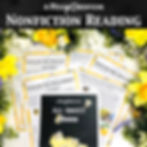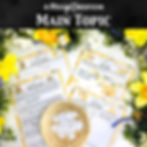Buzzing with Knowledge: Resources for Teaching Elementary Students about Bees
- A Messy Classroom
- Jun 9, 2023
- 3 min read
Updated: Jul 9, 2024
Bees play a vital role in our ecosystem as pollinators, and teaching elementary students about these incredible creatures can foster a deep appreciation for nature and environmental conservation. By exploring the world of bees, students can learn about their importance, life cycle, behavior, and the fascinating ways in which they contribute to our planet. In this blog post, we will highlight a range of educational resources and activities to help teachers engage elementary students in learning about bees.
Teaching about bees? Check out these writing prompt ideas.

Bee Books and Literature:
Introduce the world of bees to your students through captivating bee books. Here are a few recommendations:
"The Bee Book" by Charlotte Milner: This beautifully illustrated book provides a comprehensive introduction to bees, their anatomy, life cycle, and the crucial role they play in pollination.
"Flight of the Honey Bee" by Raymond Huber: This engaging picture book explores the life of a honey bee, showcasing their journey from hive to flower and the importance of their work.
"The Honeybee" by Kirsten Hall: This informative book explores the life and behavior of honeybees, including their roles within the hive and the process of making honey.
BUY the complete Bee Unit Reading Bundle HERE
Bee Anatomy and Insect Life Cycle:
Help students understand the intricate bee anatomy and life cycle of honey bees with these interactive activities:
Bee Anatomy Chart: Create a visual chart of a bee's anatomy, labeling key body parts such as antennae, wings, legs, and stinger. Discuss the functions of each body part and how they contribute to the bee's survival and role as a pollinator.
Life Cycle Diagram for Bees: Construct a life cycle diagram showcasing the different stages of a bee's life, from egg to larva, pupa, and finally, an adult bee. Explore the unique characteristics and responsibilities of each stage.
Bee Conservation and Flower Pollination:
Teach students about the crucial role bees play in our environment and the importance of bee conservation:
Flower Pollination Lesson: Explain the process of pollination and how bees assist in the transfer of pollen from one flower to another. Discuss the impact of pollination on the growth of fruits, vegetables, and flowering plants.
Wild Bee Flower Garden Project: Create a mini-garden or dedicate a section of the schoolyard to a pollinator-friendly habitat. Encourage students to plant flowers that attract bees, such as lavender, sunflowers, or borage. Observe and document the visiting bees and discuss their behavior and interaction with the flowers.

Bee Behavior and Communication:
Explore the fascinating bee behavior and the communication methods of bees with these engaging activities:
Dance Like a Bee: Teach students about the bee's famous "waggle dance" by demonstrating how bees communicate the location of food sources to their hive mates. Have students replicate the dance movements and discuss the purpose and importance of this unique behavior.
Bee Role Play: Divide students into groups and randomly assign them different roles within a bee colony, such as queen and worker. Have them act out the responsibilities and tasks of each role, emphasizing the interdependence of the colony. To practice with the vocabulary, you could play a game of duck, duck, goose but instead say worker, worker, queen.
Bee Field Trips and Entomologists Guest Speakers:
Enhance students' understanding of bees and pollination through real-life experiences and expert insights:
Beekeeping Visit: Arrange a visit to a local beekeeper's apiary, where students can observe bees in action, learn about hive maintenance, and witness the extraction of honey. Engage in discussions with the beekeeper about the importance of bees and their conservation efforts.
Guest Speaker: Invite a local bee expert or environmentalist to share their knowledge and experiences with bees. They can discuss topics such as bee behavior, the impact of pesticides on bee populations, and the importance of creating bee-friendly habitats.

Teaching elementary students about bees not only expands their knowledge of the natural world but also cultivates a sense of wonder and responsibility toward environmental conservation. By utilizing these resources and engaging activities, teachers can inspire a deep appreciation for the vital role bees play in our ecosystem. Students will develop a greater understanding of the interconnectedness of all living things and the importance of protecting and preserving these remarkable pollinators. Empowered with knowledge, they can become advocates for bee conservation, making a positive impact on their communities and the planet as a whole. So, let's embark on this buzzing educational journey, empowering the next generation to be champions of bees and environmental stewardship!
BUY the a Bee Unit Reading Bundle HERE








